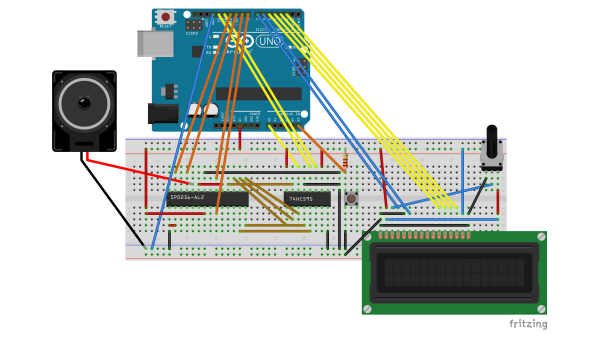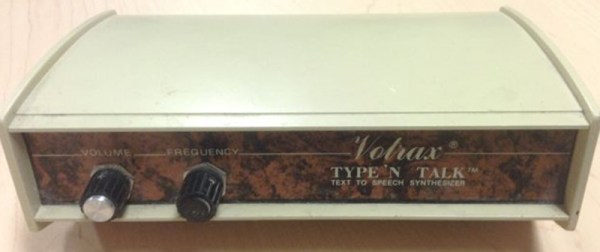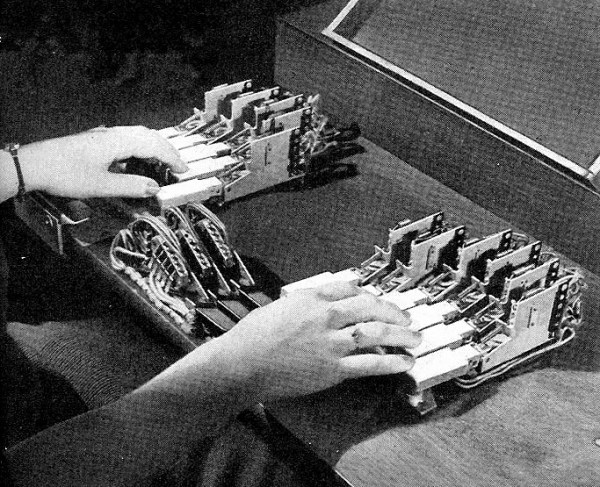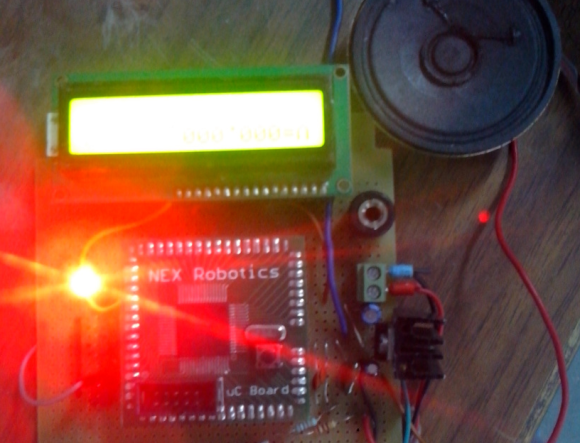They just don’t write promotional film scripts like they used to: “These men are design engineers. They are about to engage a new breed of computer, called Graphic 1, in a dialogue that will test the ingenuity of both men and machine.”
This video (embedded below) from Bell Labs in 1968 demonstrates the state of the art in “computer graphics” as the narrator calls it, with obvious quotation marks in his inflection. The movie ranges from circuit layout, to animations, to voice synthesis, hitting the high points of the technology at the time. The soundtrack, produced on their computers, naturally, is pure Jetsons.
Highlights are the singing “Daisy Bell” at 9:05, which inspired Stanley Kubrick to play a glitchy version of the track as Dave is pulling Hal 9000’s brains out, symbolically regressing backwards through a history of computer voice synthesis which at that point in time was the present. (Whoah!)
Continue reading “Retrotechtacular: The Incredible Machine”






 [Aditya] had a project that called for spoken output. He admits that he could have built a PC-based solution, but he found that
[Aditya] had a project that called for spoken output. He admits that he could have built a PC-based solution, but he found that 









